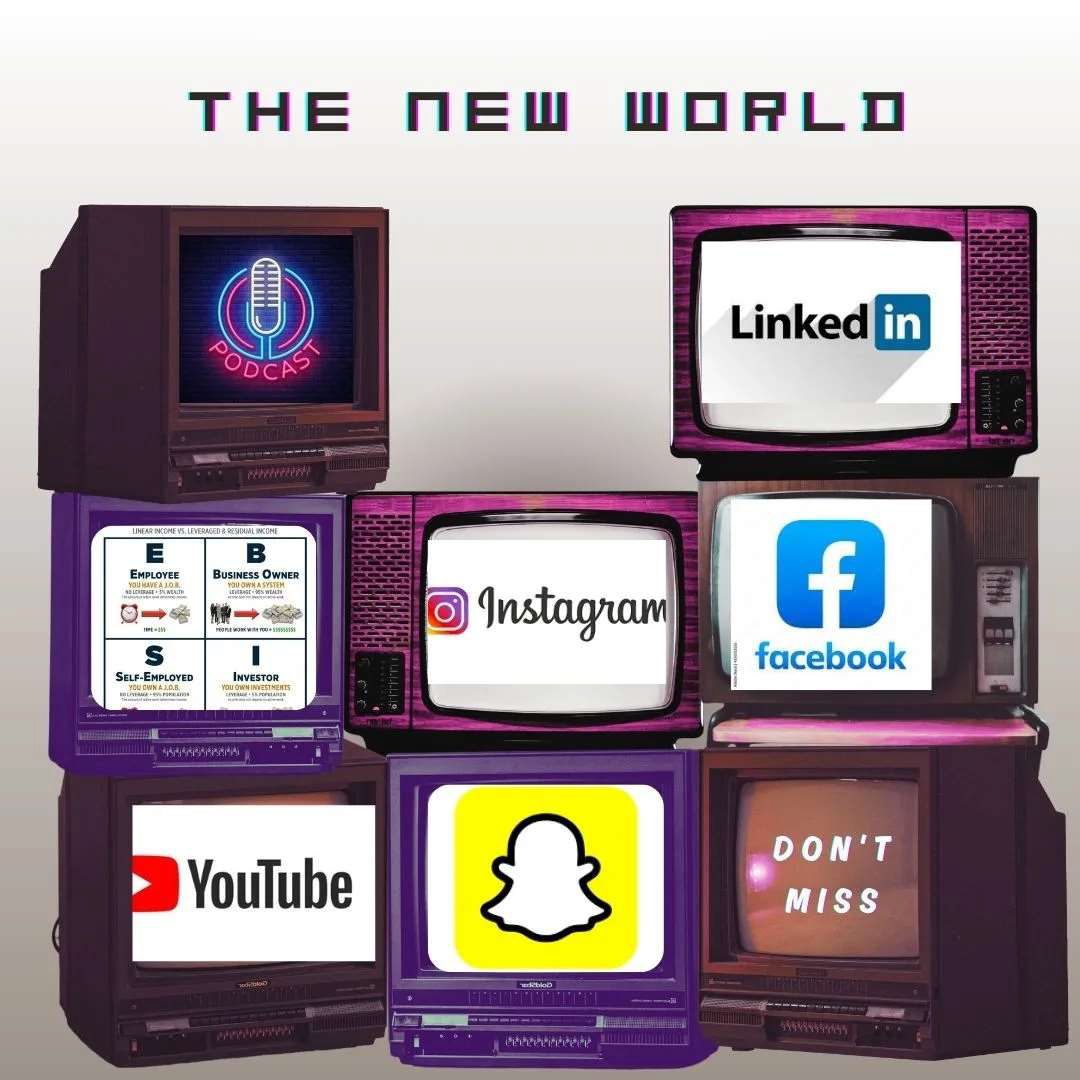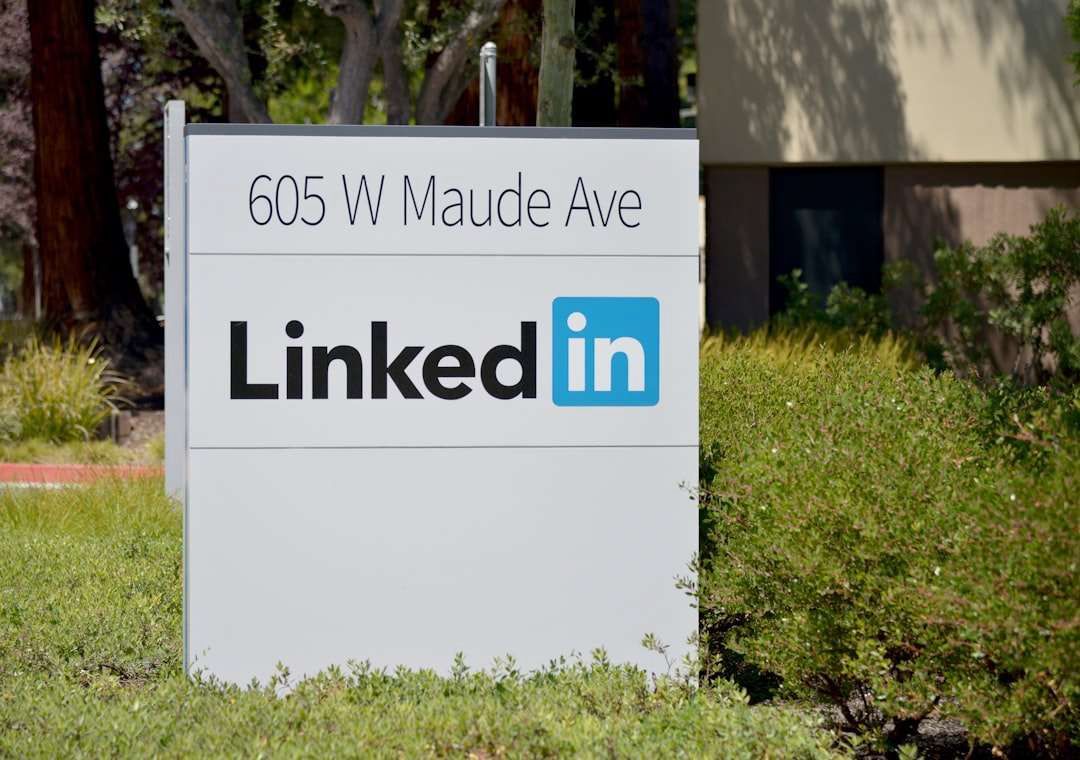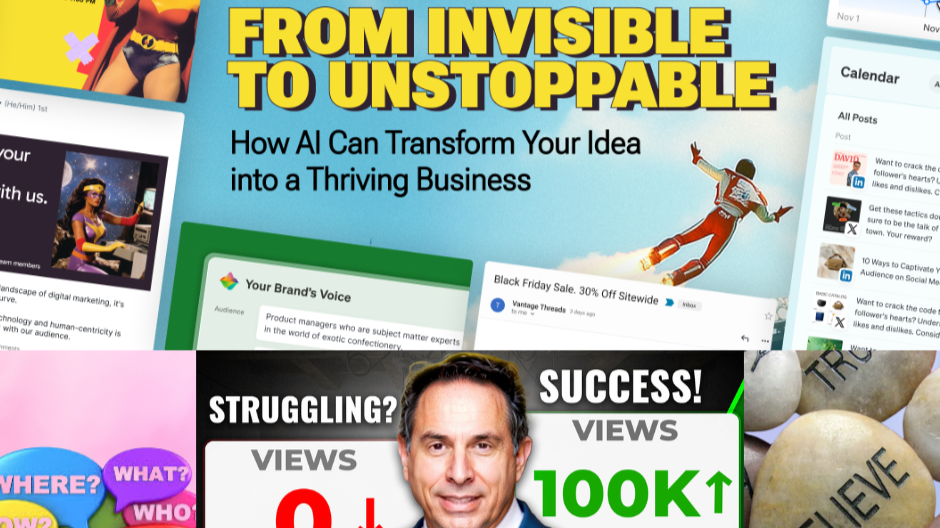From Traditional to Digital: Embracing Modern Marketing Strategies in an Era of Endless Media Choices
In today's fast-paced digital landscape, marketers and business owners are In today's fast-paced digital landscape, marketers and business owners are faced with an unprecedented array of media choices, from traditional platforms to innovative information channels and social media advertising. As audiences migrate from conventional TV to a myriad of digital outlets, the challenge of navigating this information overload while crafting compelling messages has never been more pressing. Embracing modern marketing strategies is essential
for anyone hoping to thrive in this dynamic environment, where the ability to captivate and engage consumers is key. This piece will explore how to effectively integrate these strategies, ensuring your message cuts through the noise and resonates with your target audience. Get ready to transform your approach and harness the power of the digital age.

The Shift to Digital Marketing
Understanding Information Overload
In the digital era, information overload is a significant challenge for marketers. With a constant stream of content from information channels, social media platforms, and other digital outlets, consumers are inundated with messages daily. This saturation makes it difficult for any single message to stand out. For marketers, understanding this overload is crucial to devising effective strategies. It requires a shift from traditional blanket advertising to more targeted, personalized approaches. By leveraging data analytics, marketers can gain insights into consumer preferences and behaviors, enabling them to tailor messages that resonate. Additionally, prioritizing quality over quantity in content creation can help capture attention amidst the noise. The goal is not just to be seen but to be remembered, ensuring that your message not only reaches your target audience but also engages and compels them to take action.
Navigating Endless Media Choices
Navigating the plethora of media choices available today can be daunting for marketers. The shift from traditional media to digital platforms has expanded the options exponentially. From social media advertising to podcasts and streaming services, each channel presents unique opportunities and challenges. To effectively navigate this landscape, marketers must first understand their target audience's media consumption habits. This involves identifying which platforms they frequent and how they engage with content. Once these insights are in place, marketers can allocate resources more strategically, focusing on platforms that offer the highest engagement potential. Additionally, it is crucial to maintain a consistent brand message across all chosen channels to build a cohesive brand identity. Flexibility is also key, as media preferences can shift rapidly. By staying
informed about emerging trends and technologies, marketers can continuously refine their strategies to ensure they are reaching and resonating with their audience in the most effective way possible.

Traditional vs. Modern Marketing Strategies
The transition from traditional to modern marketing strategies marks a significant evolution in how businesses engage with consumers. Traditional marketing, characterized by print ads, TV commercials, and billboards, relies on broad messaging to reach large audiences. While effective in its time, these methods often lack the precision of digital strategies. Modern marketing, on the other hand, leverages digital tools and platforms to deliver targeted, data-driven campaigns. This approach allows for personalization, enabling marketers to tailor messages to specific audience segments based on detailed consumer insights. The interactive nature of digital platforms also facilitates direct engagement, fostering stronger relationships with consumers. However, modern strategies require a deep understanding of digital analytics and a willingness to adapt to rapid technological changes. By integrating traditional strengths like brand storytelling with the precision and flexibility of digital strategies, businesses can create a hybrid approach that maximizes reach and impact in today's dynamic media environment.

Social Media Advertising Dominance
Leveraging Platforms for Growth
Leveraging social media platforms for growth is a cornerstone of modern marketing strategies. With billions of users across platforms like Facebook, Instagram, and LinkedIn, businesses have the opportunity to reach highly targeted audiences with precision. Each platform offers unique features and analytics tools that can be harnessed to maximize impact. For instance, Instagram's visual-centric approach is ideal for brands with strong visual storytelling, while LinkedIn serves as a powerful channel for B2B marketing. To effectively leverage these platforms, businesses must first define clear goals, whether it's brand awareness, lead generation, or customer engagement. Creating content that resonates with the specific audience of each platform is crucial, as is engaging with users to foster community and loyalty. Additionally, regularly analyzing performance
metrics allows businesses to refine and optimize their strategies. By aligning platform capabilities with business objectives, social media advertising can drive significant growth and strengthen brand presence in the digital age.

Crafting Compelling Online Campaigns
Crafting compelling online campaigns is essential for standing out in the crowded world of social media advertising. The key to success lies in creating content that not only captures attention but also engages and motivates the audience to take action. Start by understanding your target audience's preferences and pain points to tailor your message effectively. Use eye-catching visuals and concise, impactful copy to convey your brand's value proposition quickly. Storytelling can be a powerful tool in building emotional connections with your audience, making your campaign more memorable. Interactive elements like polls, quizzes, and user-generated content can further enhance engagement, encouraging users to participate and share your message. Consistency across all campaign elements, from visuals to tone, helps reinforce brand identity. Finally, continuously monitor and analyze campaign performance to identify what's working and what needs adjustment. By tweaking your strategy based on real-time data, you can optimize your campaigns for maximum reach and impact.

Engaging Audiences in Real-Time
Engaging audiences in real-time is a powerful strategy that leverages the immediacy and interactivity of social media platforms. Real-time engagement allows brands to connect with their audience on a more personal level, fostering a sense of community and loyalty. Live streaming events, Q&A sessions, and interactive stories are effective ways to capture attention and drive engagement. These formats encourage immediate interaction, prompting users to comment, share, and react in the moment. Responding promptly to comments and messages shows that your brand values customer interaction and feedback, enhancing user experience and trust. Additionally, staying attuned to current events and trends can help brands participate in relevant conversations, increasing visibility and relevance. Employing real-time analytics tools enables marketers to adjust strategies on the fly, optimizing engagement outcomes. By actively engaging with audiences in real-time, brands can create dynamic, responsive interactions that deepen relationships and amplify their presence in the digital landscape.

Optimizing Information Channels
Selecting the Right Channels
Selecting the right channels is crucial in optimizing the effectiveness of your marketing strategy. With a myriad of information channels available, from social media and blogs to podcasts and video platforms, choosing the ones that best align with your target audience is key. Start by identifying where your audience spends most of their time and how they prefer to consume content. This requires understanding demographic details, interests, and online behaviors. Once these insights are gathered, prioritize channels that offer the highest potential for engagement and conversion. Consider the strengths of each platform; for instance, YouTube is ideal for video content, while LinkedIn excels in professional
networking. Additionally, ensure that your chosen channels align with your brand's messaging and goals. By focusing on a select few channels, you can allocate resources more efficiently and create a cohesive, targeted approach that maximizes impact and delivers measurable results in reaching and engaging your audience.

Integrating Cross-Platform Strategies
Integrating cross-platform strategies is essential for creating a unified and effective marketing approach. By ensuring that your message is consistent across various information channels, you can build a stronger brand identity and reach a broader audience. Start by developing a comprehensive content plan that aligns with your overall marketing objectives. This plan should outline how each platform will be used to complement others, such as using Instagram for visual storytelling, Twitter for quick updates, and a blog for in-depth content. Cross - promotion is key, as it encourages audiences on one platform to engage with your content on another, increasing overall reach and engagement. Utilize tools that allow for seamless integration and tracking of performance across platforms, enabling you to adjust strategies based on data-driven insights. By maintaining a cohesive
brand presence and leveraging the unique strengths of each channel, you can create a more impactful and engaging experience for your audience.

Measuring Success and ROI
Measuring success and return on investment (ROI) is vital for understanding the effectiveness of your marketing strategies across information channels. Begin by setting clear, measurable objectives aligned with your business goals, such as increasing brand awareness, driving website traffic, or boosting sales. Use key performance indicators (KPIs) like engagement rates, conversion rates, and customer acquisition costs to evaluate performance. Digital analytics tools such as Google Analytics and social media insights provide valuable data on how your content is performing across platforms. Regularly review this data to identify trends and areas for improvement. Calculating ROI involves assessing the revenue generated from marketing activities relative to the costs incurred. This helps determine which channels and strategies deliver the best value. By continually measuring and analyzing results, you can refine your approach, allocate resources more effectively, and ensure that your marketing efforts contribute positively to your bottom line.

Adapting to Consumer Behavior
Personalization in Marketing
Personalization in marketing has become a cornerstone of adapting to evolving consumer behavior. As consumers demand more relevant and tailored experiences, businesses must leverage data to personalize their messaging and interactions. Start by collecting and analyzing data on customer preferences, purchase history, and behavior patterns. This information can be used to segment your audience and create targeted campaigns that speak directly to their interests and needs. Personalization can take many forms, from personalized email greetings and product recommendations to dynamic website content that adjusts based on user behavior. By making consumers feel seen and understood,
personalization enhances customer engagement and loyalty. It also increases the likelihood of conversions, as personalized experiences resonate more deeply with consumers. However, it's essential to balance personalization with privacy considerations, ensuring that data is used ethically and transparently. By integrating personalization into your marketing strategy, you can create more meaningful connections with your audience and drive better business outcomes.

The Role of Customer Feedback
Customer feedback plays a crucial role in adapting to consumer behavior and shaping effective marketing strategies. By actively listening to customer opinions, businesses can gain valuable insights into what their audience values and expects. Feedback can come from various sources, including surveys, reviews, social media comments, and direct customer interactions. This information helps identify strengths and weaknesses in products or services, guiding improvements and innovation. Moreover, feedback allows marketers to understand shifting consumer preferences, enabling them to adjust their strategies accordingly. Responding to feedback demonstrates that a brand values its customers,
fostering trust and loyalty. It also provides an opportunity to address concerns and enhance customer satisfaction. Integrating feedback into the decision-making process ensures that marketing efforts align with consumer needs and expectations. By continually evolving based on customer input, businesses can maintain relevance and competitiveness in an ever-changing market, ultimately strengthening their relationship with their audience.

Building Brand Loyalty Online
Building brand loyalty online is essential for sustaining long-term business success in the digital age. With numerous choices at consumers' fingertips, fostering loyalty requires more than just offering quality products or services. It involves creating meaningful and consistent interactions that enhance the customer experience. Start by ensuring your brand maintains a strong and engaging online presence across all relevant platforms. Regularly communicate with your audience through personalized content, social media interactions, and email updates that resonate with their interests and values. Offering exclusive deals or rewards to loyal customers can also incentivize continued engagement and purchases. Additionally, transparency and responsiveness in addressing customer inquiries or issues can significantly boost trust and loyalty. Encourage and showcase user-generated content, such as reviews or testimonials, to build a community around your brand. By prioritizing customer relationships and delivering value beyond the initial sale, you can cultivate a loyal customer base that advocates for your brand online.

Future Trends in Marketing
Al and Automation in Advertising
Al and automation are transforming the landscape of advertising, offering new opportunities for efficiency and personalization. By harnessing Al, marketers can analyze vast amounts of data to gain insights into consumer behavior, preferences, and trends. This enables the creation of highly targeted campaigns that deliver the right message to the right audience at the right time. Automation streamlines processes such as ad placement, bidding, and performance monitoring, allowing marketers to focus on strategic decision-making. Programmatic advertising, for example, uses Al to automate the buying of ad space, optimizing cost and reach in real-time. Additionally, Al-powered chatbots and virtual assistants enhance customer interaction by providing instant responses to inquiries, improving user experience. However, while Al and automation offer significant advantages, they also require careful management to ensure ethical use and data privacy. As these technologies continue to evolve, they will play an increasingly vital role in shaping the future of advertising, driving innovation and competitiveness.

Embracing New Technologies
Embracing new technologies is pivotal for staying ahead in the ever-evolving marketing landscape. As digital ecosystems expand, marketers must be agile in adopting innovations that can enhance communication and engagement with their audience. Technologies such as augmented reality (AR) and virtual reality (VR) offer immersive experiences that can transform how consumers interact with brands, providing opportunities for creative storytelling and product demonstrations. Additionally, the rise of voice search and smart speakers necessitates optimizing content for voice-activated devices, ensuring accessibility and relevance. Blockchain technology also presents potential in enhancing transparency and security in digital advertising, addressing growing concerns over data privacy. By integrating these emerging technologies into their strategies, marketers can offer more personalized and engaging experiences that meet the expectations of tech-savvy consumers. Staying informed and experimenting with new tools helps businesses maintain a competitive edge, fostering innovation and growth in a dynamic market environment.

Preparing for emerging media landscapes
Preparing for emerging media landscapes is essential for marketers aiming to remain relevant and effective. As new platforms and technologies emerge, they reshape how audiences consume content and interact with brands. To navigate these changes, marketers must adopt a proactive approach, continuously researching and experimenting with new media opportunities. This involves staying updated on trends such as the rise of short-form video content, the growing influence of social commerce, and the potential of virtual worlds in the metaverse. Building agility into marketing strategies allows businesses to adapt quickly to shifts in consumer behavior and technology. Moreover, investing in skills development and digital literacy ensures teams are equipped to harness these new tools effectively. By fostering a culture of innovation and openness to change, businesses can identify and leverage opportunities in emerging media landscapes, positioning themselves as leaders in their industry and ensuring sustained engagement with their target audience.




